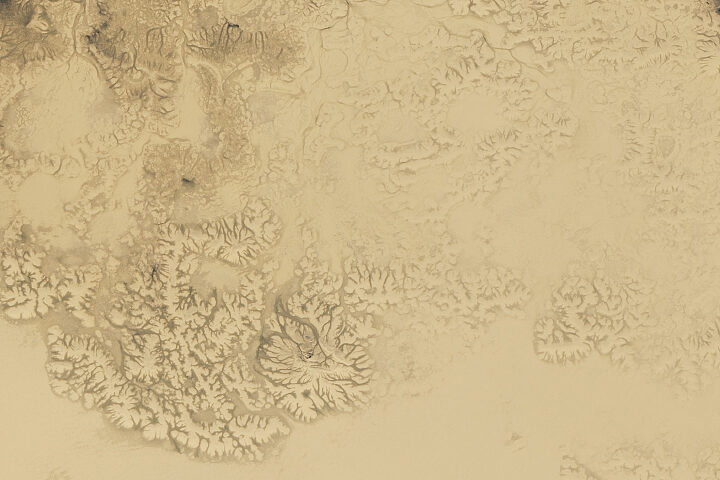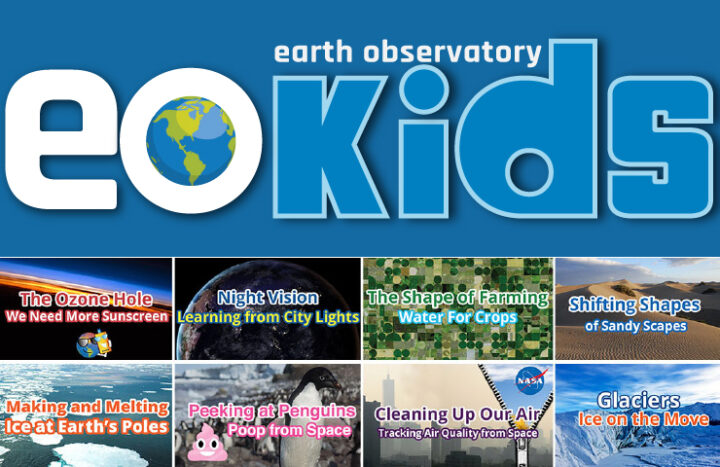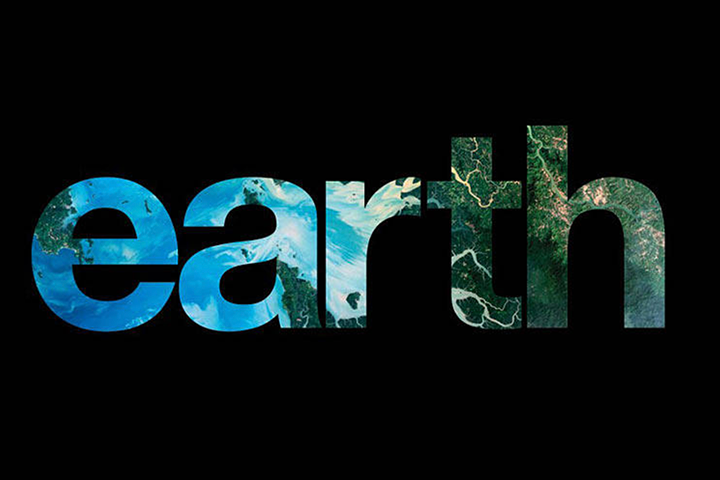


Every month on Earth Matters, we offer a puzzling satellite image. The September 2020 puzzler is above. Your challenge is to use the comments section to tell us what we are looking at, where it is, and why it is interesting.
How to answer. You can use a few words or several paragraphs. You might simply tell us the location, or you can dig deeper and explain what satellite and instrument produced the image, what spectral bands were used to create it, or what is compelling about some obscure feature. If you think something is interesting or noteworthy, tell us about it.
The prize. We cannot offer prize money or a trip to Mars, but we can promise you credit and glory. Well, maybe just credit. Roughly one week after a puzzler image appears on this blog, we will post an annotated and captioned version as our Image of the Day. After we post the answer, we will acknowledge the first person to correctly identify the image at the bottom of this blog post. We also may recognize readers who offer the most interesting tidbits of information about the geological, meteorological, or human processes that have shaped the landscape. Please include your preferred name or alias with your comment. If you work for or attend an institution that you would like to recognize, please mention that as well.
Recent winners. If you’ve won the puzzler in the past few months, or if you work in geospatial imaging, please hold your answer for at least a day to give less experienced readers a chance.
Releasing Comments. Savvy readers have solved some puzzlers after a few minutes. To give more people a chance, we may wait 24 to 48 hours before posting comments. Good luck!
See our “Sandy Plains in the Arctic” Image of the Day for the answer.
| School is starting and NASA’s Earth Observatory has resources for children and teachers! |

EO Kids – Come Explore Earth with EO Kids! Read all about different topics in NASA Earth science and try out the hands-on activities. Each issue helps students learn how NASA’s fleet of satellites help us understand and plan for our changing world. Issues are available as printable PDFs. Educators can print and distribute to students with limited access to technology. Parents can print issues for their children so they can actively learn while taking a break from screen-time.
For students on computers, check out EO Kids videos of some of the cool activities featured in our issues. At EO Kids we are committed to making Earth science fun and engaging. Come explore our Earth with us!

Mission: Biomes – In celebration of 20 years since its first release, the Earth Observatory has updated the Mission: Biomes activity to support interactive learning and awareness of seven terrestrial biomes: rainforest, grassland, temperate deciduous forest, coniferous forest, desert, tundra, and shrubland. After reading about each biome, users can enter “The Great Graph Match” and test their biome knowledge. After mastering “The Great Graph Match”, users can enter the “To Plant or Not to Plant?” mission, read about 19 plants growing all over the world, and match those plants to the biome they prefer. Visit the Teacher Resources page to learn more about the Mission: Biomes goals, expected outcomes for students, the Next Generation Science Standards alignment, general tips for navigating the site, additional activities to learn, and more!

Earth, a photo essay – NASA’s Earth is a fantastic resource for students to practice their reading skills while learning about Earth through stunning images of our planet. Through this book students appreciate science as art, part of STEAM (Science, Technology, Engineering, Art, and Math) focused curriculums.
The Earth Observatory team hopes that you all have an inspiring and informative school year!